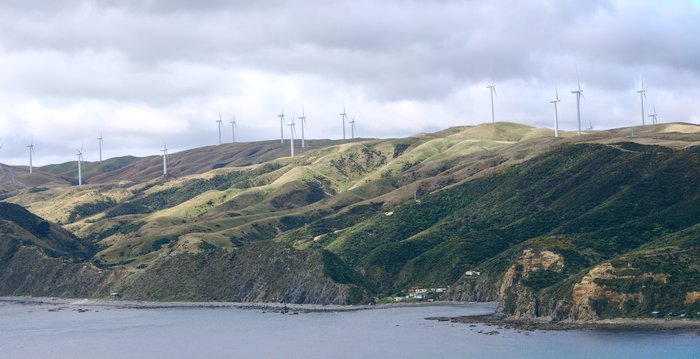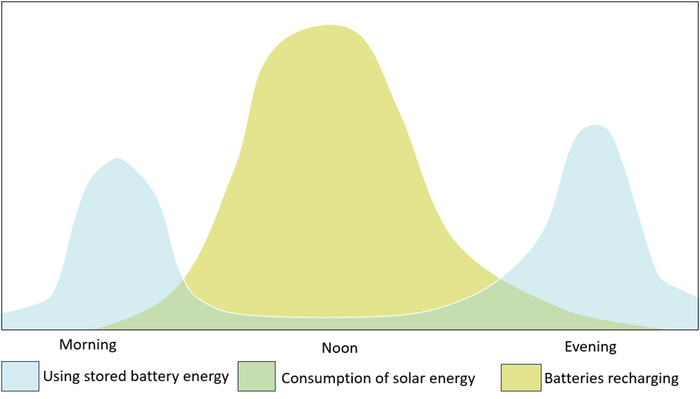Eye on electricity
The electricity sector transition
- Generation
- Low emissions

New Zealand’s electricity system is transforming. In 2019, the Government passed a law targeting net zero greenhouse gas emissions by 2050.1 To achieve this goal, thermal generation, which provides storable and flexible generation, will be reduced and more renewable generation, like wind and solar, will be built.
In 2022, thermal generation provided about 16% of New Zealand’s electricity, while wind delivered 6%, and solar only contributed 0.006%. Currently, about 91% of new generation projects in Aotearoa are either wind or solar.2 This shift to more renewable generation will require new technologies, policies and approaches, to ensure the continued delivery of efficient and reliable electricity for Aotearoa.
Firming and demand response
The electricity system must become highly adaptive to accommodate intermittent renewable generation, like wind and solar, as their outputs naturally fluctuate. Increased coordination and information sharing will allow industry participants to quickly react to variations in intermittent generation.
Intermittent generation is tricky to forecast, so the electricity system must continue to have ways to store excess energy. For example, it could be excessively windy at 2 am when demand is low. There must be other electricity sources available for when wind and solar outputs are low. For example, during cold, cloudy, windless mornings. The technology used to store and release intermittent energy is called firming. It’s mostly either hydro storage or batteries. A simple diagram showing how batteries firm solar output is shown in Figure 2.
Demand response will also feature more in a highly renewable electricity grid. Here, electricity consumers receive a financial incentive to reduce their consumption when demand is high. Read more on our website about demand response.
Large electricity consumers, like the Tiwai Aluminum Smelter, have recently agreed to a demand response deal with its electricity providers. When necessary, the smelter will turn down its production and free up electricity for households and businesses. Another demand response deal has been struck between Contact Energy and Glenbrook Steel.

Timelines
Changes to New Zealand’s electricity system will take time. Building more renewable generation and firming technology, like batteries, is underway. Contact Energy has nearly completed its 174 MW Tauhara geothermal power station near Taupō. This is expected to be commissioned in late 2023. Mercury’s Kaiwera Wind farm, near Gore, is also expected to be completed this year. Meridian plans to have its first 100 MW Ruakākā battery near Whangārei finished in September 2024
Transpower monitors new connection enquiries to the electricity grid. Using its dashboard, you can see what regions have high volumes of connection enquiries, and filter between different types of network connections, including generation, energy storage and network upgrades.
The Electricity Authority has conducted a review of the wholesale market competition, and decided to increase our monitoring of new generation to better ensure the efficient, reliable, and competitive operation of Aotearoa's electricity market. Read our decision paper.
Low-carbon economy
More renewable electricity will facilitate the decarbonisation of New Zealand’s economy. This will allow New Zealand to export more low carbon, or carbon neutral, goods and services overseas. It is also likely to attract new foreign investment from companies which want to utilise renewable electricity. For example, data centres are being built which are powered by hydroelectricity.
Renewable electricity will allow other industries, like transport and manufacturing, to transition away from fossil fuels. In June 2023, Fonterra announced its investigating ways to decarbonise using electricity.
What we’re doing
The Electricity Authority has, and will continue to, adjust market settings to support New Zealand’s transition to a highly renewable electricity system. Changes we’ve made, like the implementation of real-time pricing, allow the sector to quickly adapt to fluctuating electricity supply and demand, and facilitate more demand response. We are also working on improving the accuracy of intermittent generation forecasting and are currently seeking feedback on our proposed solutions. View our consultation.
Transitioning from a system which has served Aotearoa’s past needs well, to a system that will propel our country into the future, will take time to implement. It will require mahi from all involved, including central and local governments, generators, the system operator, transmission owners and consumers.
1. Climate Change Response (Zero Carbon) Amendment Act 2019.
2. Actively pursued new generation projects for 2023-25 are wind or solar, according to research by Concept Consulting commissioned by the Electricity Authority.
Related News
Unlocking the potential for batteries to contribute to security of supply
As New Zealand electrifies, more grid-scale batteries will maximise the benefits of renewable energy and provide extra resilience during times of tight electri…
Feedback sought on the future operation of New Zealand’s power system
The Electricity Authority Te Mana Hiko has opened a consultation looking into the future operation of New Zealand’s power system, and we want your feedback. Ne…
The levelised cost of electricity
In New Zealand, more electricity generation is needed to meet future electricity demand and replace retiring thermal power plants. The initial build costs of n…